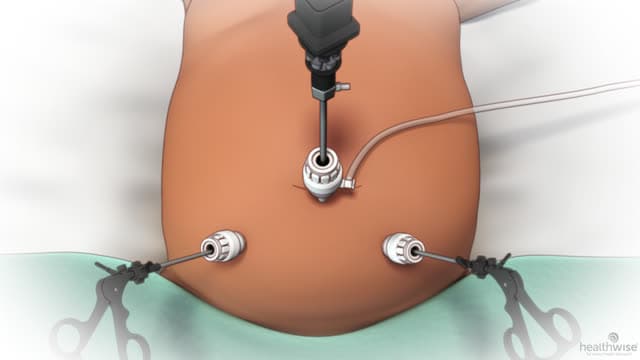During a laparoscopic operation, the surgeon can examine the organs that are located within the belly, which is a diagnostic process. In addition, because it only necessitates a few small incisions, laparoscopic surgery is less expensive than other open surgical methods used to treat the same diseases.
Because it is MIS (Minimally Invasive Surgery), it has very low risks. Invasive laparoscopy, also known as minimally invasive laparoscopy, is a medical procedure that is conducted with the use of robotic technology and a 3D camera to make small incisions in the patient's lower belly or pelvic.
The use of laparoscopy assists the surgeon in finding or identifying the source of pain in the patient's pelvic and abdominal areas. Laparoscopy is indicated for patients who have tried all other non-invasive treatments and have failed to obtain any relief from their discomfort. It aids in the determination of the causes of pain by simply diagnosing the underlying problems.

According to the extent of the patient's condition, the fee begins at Rs. 1,00,000. The cost of living in metropolitan areas and less developed sections of the country is prone to change, particularly in urban areas.
This procedure, which is used to medically treat gallbladder problems, is significantly less expensive than an open cholecystectomy, which costs approximately Rs. 1,50,000.
Laparoscopy can be defined as a way of doing surgery in which small incisions are performed in place of big cuts to access the abdominal cavity. In the field of laparoscopic surgery, there are two types of procedures: advanced surgery performed using a hand-held device & robot-assisted surgery. During surgery, the human hand conducts a variety of duties that are difficult to duplicate with the use of laparoscopic equipment.
The hand is unable to reach microscopic parts of the stomach due to its limited size and strength. This has resulted in the creation of hand-access instruments that are capable of reaching the pancreas, liver, & bile duct with ease.
A tumor-related obstruction of the bile duct may necessitate surgery, including the rebuilding of the bile duct, modifying the path of the bile duct after it has been blocked, rebuilding of the gastrointestinal tract, and suturing of the jejunum to a pancreatic duct. It is frequently beneficial for those who have undergone laparoscopic cholecystectomy, distal pancreatectomy, or adrenalectomy.
The inspection of the gall, liver, liver, appendix, spleen, stomach small and large intestine, as well as the organs of reproduction, is made possible through laparoscopic surgery. It assists the doctor in determining whether or not there is an abdominal mass or tumor, as well as any undesirable liquid in the abdominal wall or liver disease.
In the places where the incisions were made during the procedure, the patient may experience moderate to severe throbbing pain for many days. You should visit your doctor about this issue, and he or she may be able to offer you some pain-relieving medication. Patients are also likely to feel shoulder soreness following the treatment, which is not uncommon.